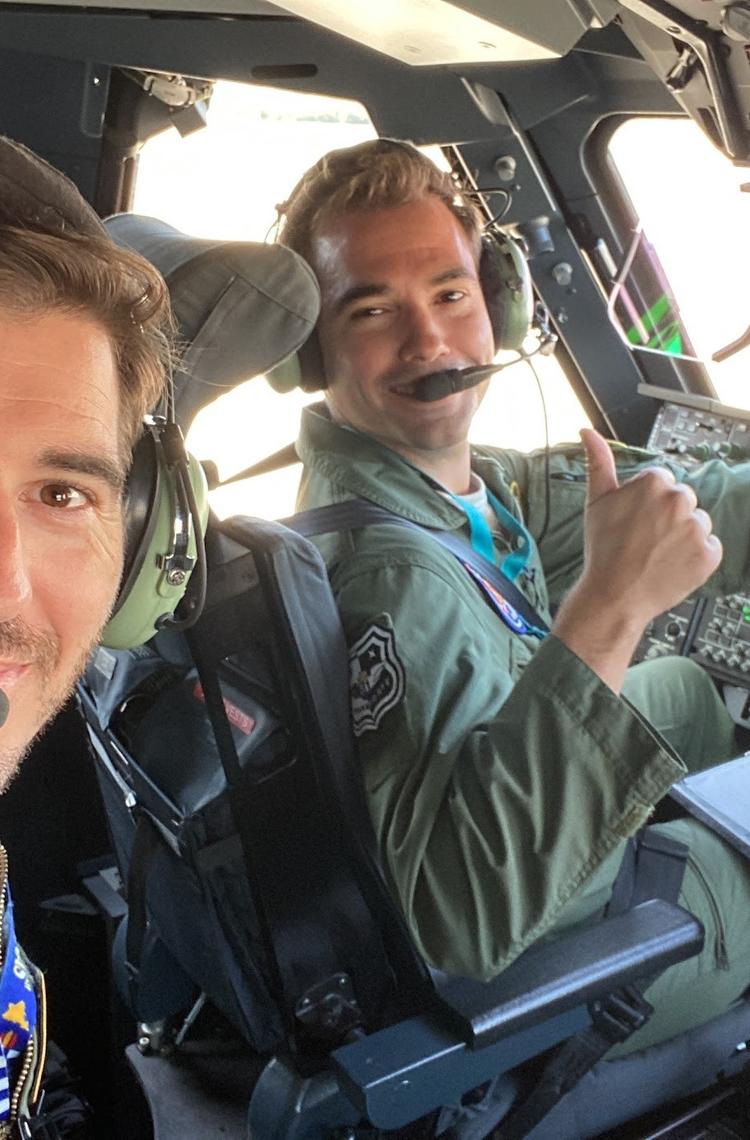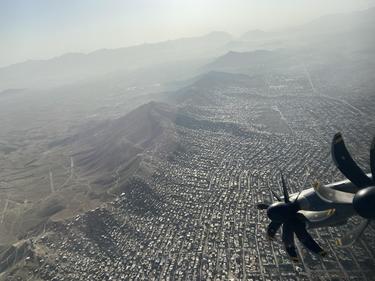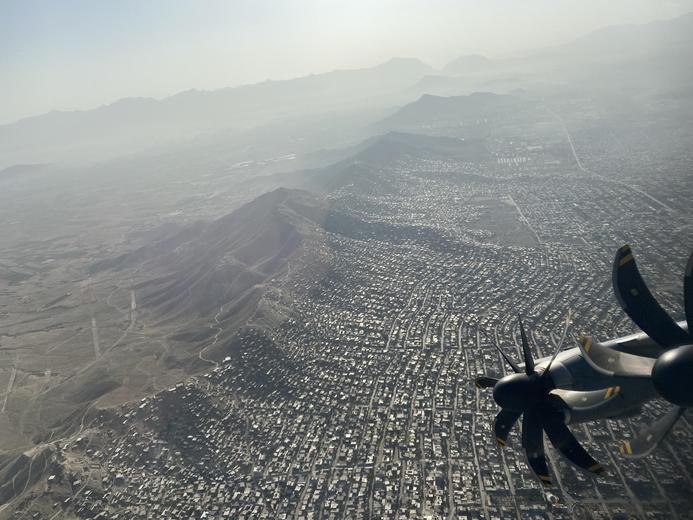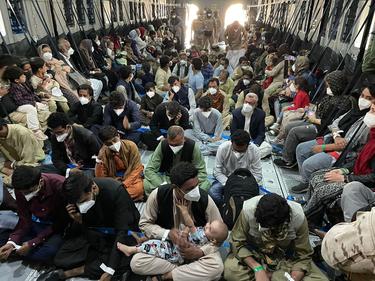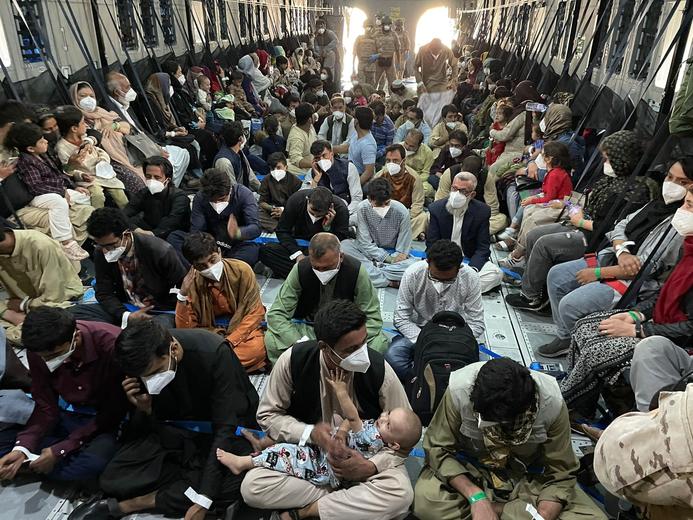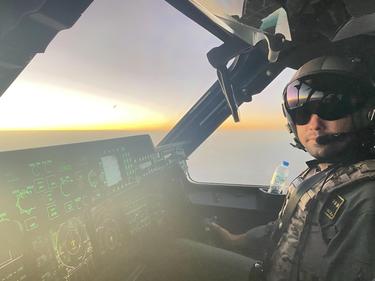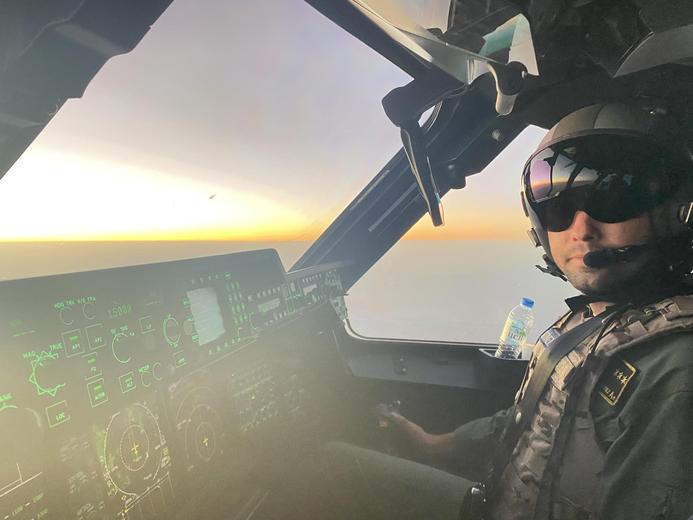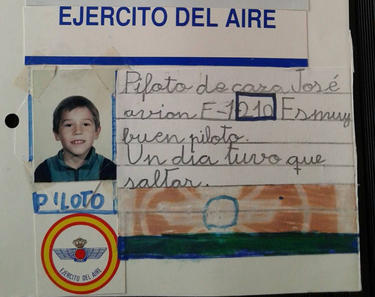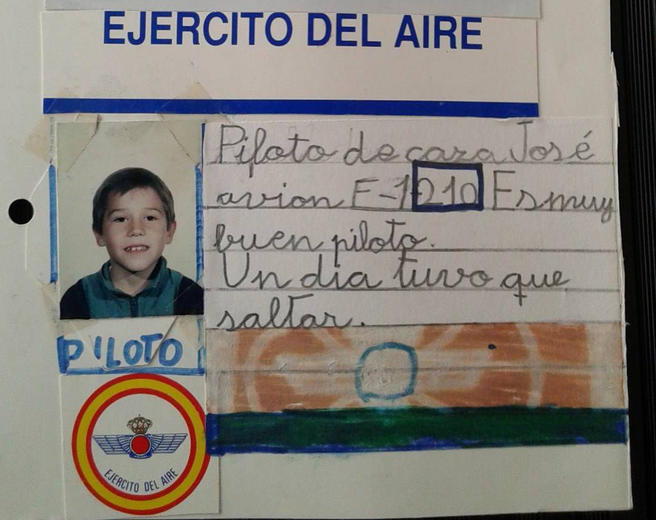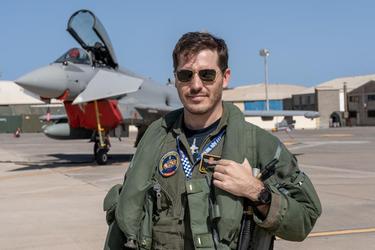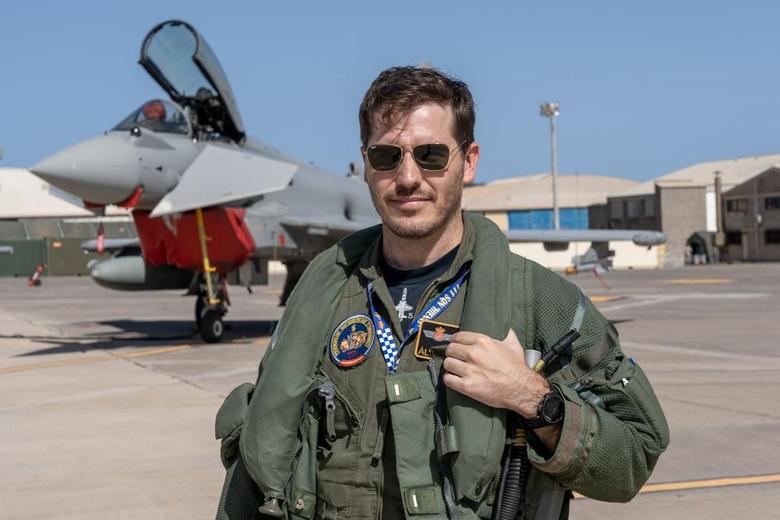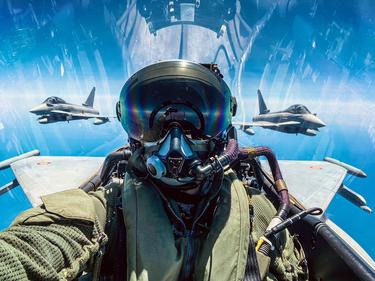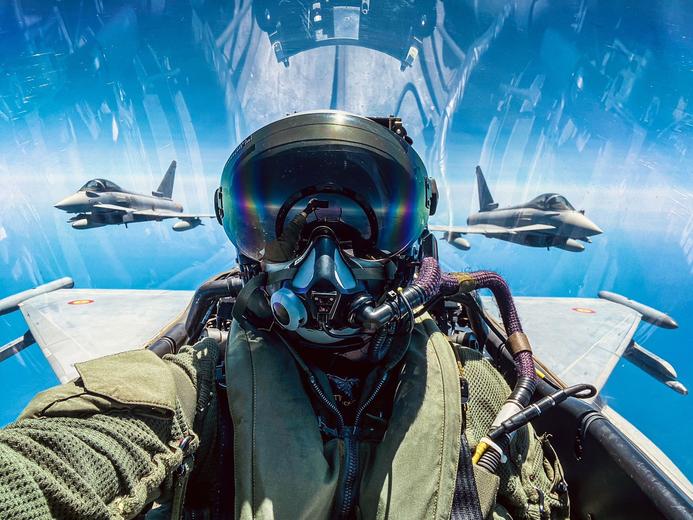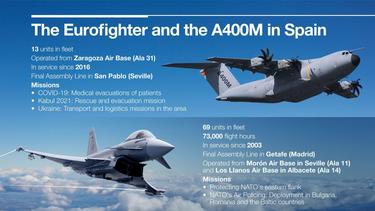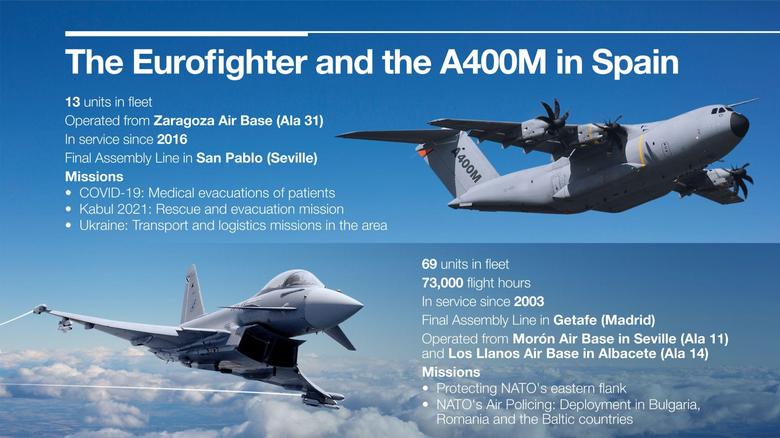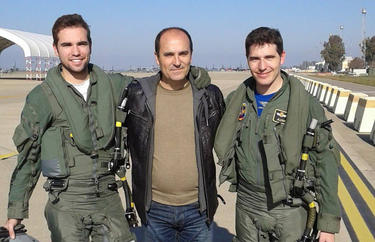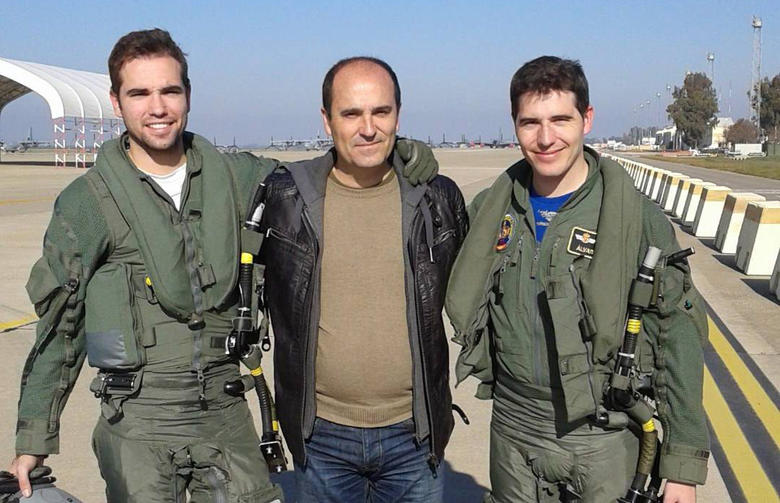Álex and Jose Álvarez grew up surrounded by the smell of kerosene and the roar of military aircraft. Their father was - and still is - a Spanish Air Force military electronics specialist. His influence has been such that Jose has been protecting European sovereignty on board a Eurofighter, while his younger brother, Álex, flies the A400M in the most demanding theatres of operations, like Afghanistan, Ukraine and Iraq.
“It was the Summer of 2021 and I was on holiday when I received a phone call,” recalls Captain Álex Álvarez, an A400M pilot with the 31st Wing of the Spanish Air Force. “‘How long will it take you to get to Zaragoza Air Base?’ I was asked.”
A few hours later, Álex was piloting an A400M destined for Kabul, with a stopover in Dubai. The aim of the three-day mission was to rescue a number of Spanish diplomats and Afghan civilians who had been working for allied nations. The reality would prove far different.
“When we took off we had no idea about what we would find there,” says Álex . “Uncertainty was everywhere. We had seen the images on television with hundreds of Afghans on the runway pleading for help. It was shocking.”
Kabul 2021: Clay pigeon shooting
At an altitude of almost 1,800 metres and surrounded by mountains, Kabul’s Hamid Karzai International Airport is challenging for all aircraft, especially with the extreme temperatures reached in August, not to mention the risk of being shot down.
“Commercial aircraft stabilise very early so they can touch down more safely,” explains Álex. “But the slower you go, the more likely you are to get hit; it's like clay pigeon shooting.”
The A400M runway-approach strategy had to be far different and well-planned in advance. “We wanted to play on the element of surprise, arriving with the first ray of light. We approached very fast and then braked to the maximum at the beginning of the runway, so it was going to be harder for the enemy to attack us.”
“Board as many people as you can”
The images that Captain Álvarez and his colleagues from the Spanish Air Force saw when they landed were those of a city on fire with thousands of people trying to flee from the Taliban. The instructions they had were very clear: they could only board those people who were on the list for security reasons.
“At the beginning, we boarded a limited number of people,” says Álex . “We flew back to Dubai, spent three hours in customs, slept the minimum necessary and then another three hours to leave the country and back to Kabul.”
According to Captain Álvarez, this went on for several rotations until they saw the Americans boarding their aircraft filled to the brim. “Tension was mounting, as we didn’t know how much time the Taliban would give us. We thought, ‘All these people are going to be killed’, so we talked to Madrid and they allowed us to board as many people as possible.”
Afghanistan, a before and after with the A400M
Despite the Daesh suicide bomber and the accumulated fatigue, Captain Álvarez and his crew didn’t relent in their mission. “Every day the situation got a little worse, but in the end we made it; we managed to get out all those people whose lives were most in danger.”
When Álex finally landed in Dubai after two weeks of relentless flying, he realised he had been, in his words, “In one of the worst scenarios in the world,” but that the A400M had ‘earned my trust’. “For me, Kabul has been a before-and-after with the A400M. You can like an aircraft a lot, but until it gets you out of trouble and proves itself to you, you can’t say it’s your aircraft.”
“The smell of kerosene was in my blood”
Captain Álvarez wouldn’t have ever been in Kabul without the influence of his older brother and his father. “My father is my role model,” he says. “On a scale of zero to 100, he is 100% responsible for who I am. He was the first one who told my brother and me that we were going to be military and he was also the person who motivated me to become a pilot like my brother.”
Back in the 90s, Álex and Jose were two kids who used to cycle to see their father and the Spanish military aircraft at Albacete Air Base, home of the 14th Wing.
“I was impressed by the idea that an aircraft could fly to the other side of the world,” says Captain Álvarez. “One day, I was allowed to enter the Hercules; the vibe was great and the crew even told me what they were doing in Kosovo. It was a real adventure and I loved it.”
Álex had followed in the footsteps of his older brother, Major Jose Álvarez, who preferred fighter aircraft: “I grew up watching the Mirage F-1,” recalls Jose. “I have to say I have the smell of kerosene in my blood. Ever since I can remember, I have wanted to be a fighter pilot.”
A fighter pilot is not Maverick
Jose, Eurofighter pilot, Squadron Leader and Mission Commander with the 11th Wing of the Spanish Air Force at Morón de la Frontera in Seville, has faced many challenges. After completing four years at the General Air Academy in Murcia – south east Spain - he was one of the four Spanish cadets selected to specialise as an American – and Spanish - fighter pilot in Texas,US.
“Resources are limited at the Academy and usually only 15 cadets per year become fighter pilots,” explains Jose. “To be one of them, you need the mental agility to work under pressure and make decisions in dangerous situations. We are not someone like Maverick - a guy who flies by instinct - but someone who has a clear mind, who knows how to think and prioritise.”.
Jose makes the connection with a top manager who makes important decisions in a very short space of time: “The difference is that in the air you can't make mistakes and if you make them, the error management has to be very good. You have to be able to accept that you have made a mistake and move on to the next task.”
Airborne within 15 minutes of the alert
Trainer of Spanish and German pilots and leading display pilot, major Álvarez has accumulated more than 1,600 Eurofighter flight hours and has been three times in the Baltic countries and one more time in Romania, protecting Allied airspace in NATO’s Air Policing mission.
“We have intercepted several Russian aircraft that have entered NATO's airspace,” says Jose. “In Spain, we carry out the same kind of missions. We are on alert 24/7, and in case an unidentified aircraft enters the airspace without a flight plan, we intercept it.”
There are always Eurofighter on Quick Reaction Alert (QRA) mode in Morón de la Frontera, Seville and Albacete. “An aircraft might be on dormant mode but, once the alarm sounds, we put on our helmets, start the engines and have to be airborne within 15 minutes of the alert to intercept the unidentified aircraft.”
A400M missions: Ukraine, Afghanistan, China, Iraq
A tanker like the A400M can make the life of a Eurofighter pilot easier, giving it fuel to increase the flight time for air patrol missions. “I have flown several missions with my brother in which my fighter has been refuelled by the aircraft he was piloting,” says Jose. “I have also escorted the A400M and cleared the air-to-air threat while he dropped paratroopers or loads.”
Álex Álvarez has been involved in operations with the A400M from all over the world: bringing PPE masks from China, sending artillery ammunition to Ukraine, repatriating Spanish fishermen who died in Canadian waters and landing in Iraq with night-vision goggles, among others.
“We recently flew low-level with night-vision goggles to land on an unpaved runway in Iraq. In fact, I don’t care if I land at an international airport or on the most demanding runway in the world because, in the end, it will be the same,” he adds.
A friendly rivalry
Álex, like his brother Jose, radiates passion when he talks about the missions he has participated in: “I always say that even if I would live 20 lives, I wouldn’t change the one I have now.”
The brothers have always had a friendly rivalry between them, rivalry between fighter pilot and transport pilot. It will come to an end very soon as Jose is temporarily leaving the Spanish Air Force. He is joining the commercial aviation world to become an A320neo pilot. What will no doubt remain will be the latent smell of kerosene on his skin.
Click here for more information on Military Aircraft
